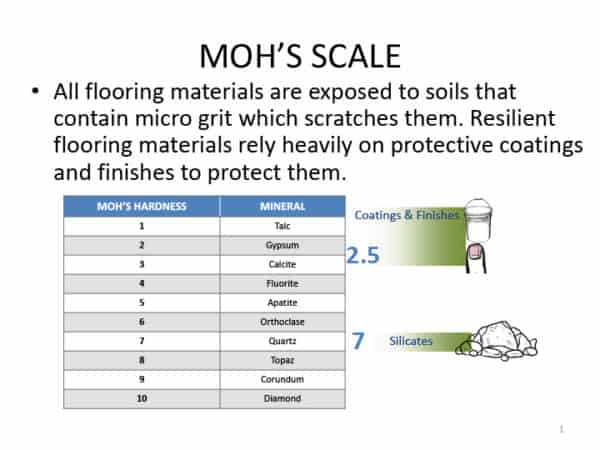As flooring industry professionals, we take our jobs very seriously, and we’re often bothered when we see things that contribute to a floor’s poor appearance or performance. Although there can be a number of reasons why a resilient floor isn’t performing well, educating your customers on chair feet and casters is an easy remedy that can help minimize flooring damage.
Simple recommendations, such as regularly cleaning the chair casters to suggesting the correct type of chair glide for resilient flooring, can go a long way to maintaining the appearance, integrity and lifespan of the floor.
In our first image, a task chair caster that isn’t being frequently cleaned has accumulated a lot of soil build up. Soil can be abrasive on resilient flooring and can cause scratches, etches and dulling.
In the second image, the protective foot of the chair has been worn down. The metal leg, now in contact with the floor, can cause abrasion and damage.
In the third image, a chair with what looks to be flooring-friendly casters actually has a small contact point on the ball of the foot that has scratched the flooring surface.

